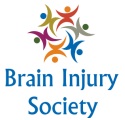
It has long been the thinking of medical professionals that rest is best for patients suffering from brain injuries. According to the Mayo Clinic, after mild traumatic brain injury, patients should avoid physical or cognitive activities until the symptoms resolve. Recent research, however, has shown that patients with brain injuries may improve more quickly if they get up and move around.
As reported in an article on NPR News, nurses at Cleveland Clinic Neurointensive Care Unit conducted a study over the course of year involving 600 patients with brain injuries. The nurses got half of those patients up and moving around as soon as possible – some on their first day in the ICU. The results clearly showed the benefits of getting patients active sooner.
The patients who started rehabilitation earlier had shorter stays in the ICU and the hospital. They had fewer infections, fewer pressure ulcers, and spent less time on ventilators. Additionally, the patients who were up and moving claimed to feel better, as reported by the nurse who organized the study.
As discussed in the NPR News article, moving the body reduces swelling and inflammation, increases circulation, reduces the incidence of blood clots, and helps to speed the healing process. With brain injuries, however, the predominant medical thinking had been that rest is better. Because an injured brain is susceptible to not enough blood flow, medical professional believed that activity begun too soon after an injury could make matters worse.
Although research had been done on mobilizing patients with other types of injuries, such as a study published in the Journal of the American Physical Therapy Association regarding early mobilization of trauma and burn patients, until the Cleveland Clinic study took place, no research had been done on early mobilization of brain injured patients, as reported in the NPR News article.
A challenge that medical professionals face in mobilizing brain injured patients is the difficulty of getting them up and moving around. After serious brain injuries, patients may be initially unable to sit, stand up, or walk on their own. As reported in the NPR News article, Cleveland Clinic solved that problem by installing lifts mounted to the ceiling for every bed in the Neurointensive Care Unit. The unit also has other equipment available and provides special training to its nurses to make early mobilization of brain injured patients easier.
Mobilizing patients after brain injuries may help speed the healing process of the brain itself, as discussed in the article. Research has shown that neuroplasticity – the brain’s ability to reorganize itself by forming new neural connections, as is defined on MedicineNet – increases immediately after injury in animals. If the same is true for humans, patients who get into motion as soon as possible after brain injury may actually have a better chance of full recovery.
